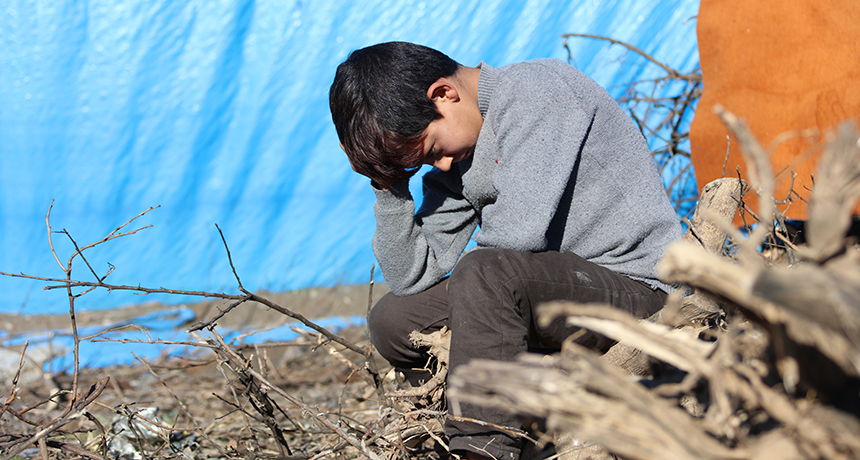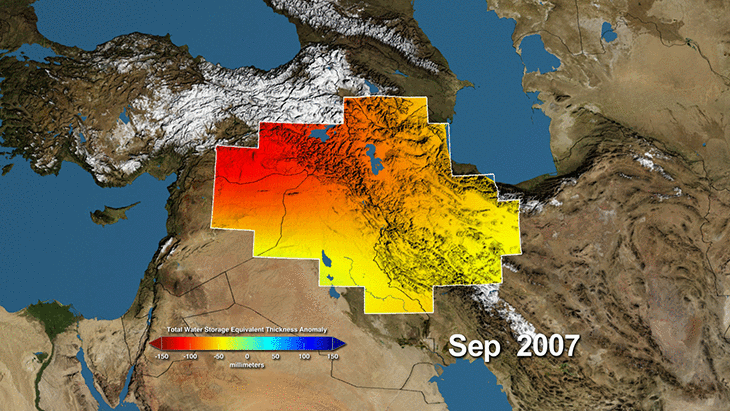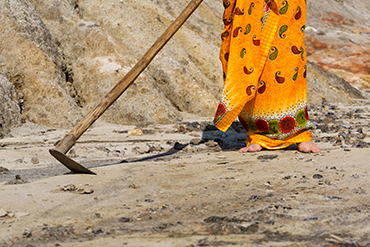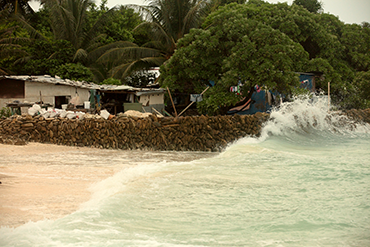Could climate change worsen global conflict?
By stressing resources and prompting mass migrations, climate change could be a ‘threat multiplier’

A Syrian boy sits in a refugee camp after civil war destroyed towns and rural areas throughout his country. Some scientists believe climate stresses could have played a role in triggering or worsening the Syrian conflict.
cloverphoto/iStock/Getty Images plus
By Ilima Loomis
There is a region in the Middle East known as the Fertile Crescent. It includes parts of what are now Turkey, Iraq and Syria. In ancient times, it was known as a birthplace of farming. But the area is not so fertile anymore. Marshlands that covered much of the area have largely dried up. Between 2007 and 2010, the region saw very little rain. It suffered the worst drought seen since scientists began keeping records here.
Climate change didn’t cause the drought, but it probably made it worse. Crops failed. People went hungry. Many people moved from rural areas to cities, crowding the urban areas.

A year later, civil war broke out in Syria. That war is still being waged today. Was climate change to blame for the conflict? Scientists do not all agree. But plenty of studies have suggested that such conflicts could become more likely in communities stressed by the weather extremes that are expected to emerge in a warming world.
Climate change is already affecting human communities in many ways. It’s been crowding out some regions as sea-level rise shrinks the size of islands and wipes away some coastal towns. It’s bashed and destroyed towns and cities with severe weather or mega-wildfires. It’s started bringing disease and job-robbing heat to some regions. It’s even changing what foods are available to eat.
Sherri Goodman is a security expert and board member with the Center for Climate and Security in Washington, D.C. “Climate change is a threat multiplier,” she says. “It aggravates existing tensions around the world,” she explains. “And makes existing threats worse.”
What about Syria?
Goodman points to Syria as a good example. When farmers and herders moved to the cities, there wasn’t enough food, water and housing for everyone. This added to the existing political problems. And that stressed people, making them angry, scared and tense.
“There were a lot of forces in the mix,” she says. “But it’s been well documented now that the climate-aggravated drought was one of the factors that led to the unrest we’ve seen in that country.”

By causing people to move within their home countries or to new ones, extreme weather and sea-level rise can be climate triggers of conflict. And in regions such as the Arctic, melting sea ice can lead to global powers competing for control of waterways and natural resources, Goodman adds.
But we shouldn’t be too quick to assume that climate change is causing war, some experts caution. People often exaggerate the link between climate and conflict, says Jan Selby. He’s a professor of international relations at the University of Sussex, in England.
Selby investigated claims that climate change had led to the Syrian civil war. Many studies had over-simplified the situation, he found. They assumed that drought was the biggest reason people moved to cities. In fact, his team found that bigger causes were poverty, the depletion of groundwater resources and conflict on Syria’s borders. Nor was that all. Certain government policies expanded the agricultural industry beyond its capacity. For example, he notes, government-funded projects to build massive agricultural infrastructure created pressure to increase wheat production beyond what was sustainable.
That’s true, too, for other studies of climate and conflict, Selby says. Changes in weather, especially drought, often get blamed for migration and social unrest. “This is wrong,” he says.
In fact, even in rural, developing areas, global economic factors play a role. What types of economic factors? He’s referring to changes in fuel and fertilizer prices, for instance. Those can hurt a farmer’s income. So can higher costs of transporting farm goods to market. And taxes imposed by local governments or militias can push farmers over the edge. “Too often,” he says, “analysts ignore this and mistakenly treat drought as the main variable.”
Colin Kelley tends to agree. He’s a climate scientist at the International Research Institute for Climate and Society. It’s at Columbia University in New York City. Kelley also is an author of a key study on the role of climate-related drought in Syria’s civil war.

“There are a lot of ways conflict can occur. And all of that was true for Syria,” he notes. But, he adds, in this case, it’s clear that environmental stress added to other pressures.
Kelley’s study found clear signs in Syria that climate change had worsened the region’s drought. He also found that the agricultural crisis this caused added to the pressures on an already unstable country. “All of these things are related,” he says. If you look at only one of them, “you’re only getting part of the picture.”
There may be bias, too
There’s still a lot people don’t know about how climate may be linked to conflict, says Tobias Ide. He works at the Georg Eckert Institute in Braunschweig, Germany. There, he studies issues that play a role in peace and conflict.
Ide reviewed 124 studies that looked at possible links between climate and conflict. All had been published between 1998 and 2017. And in them, he found what he terms a sampling bias. By that, he means, the researchers were more likely to study areas that were already violent, that were easy to visit or both. Most studies focused on Africa and the Middle East. Other areas of the world, like South America and Oceania, were hardly studied at all.

Focusing only on violent areas can make the connection between climate and violence seem stronger, he argues. If the goal is to learn how to successfully adapt to climate change, scientists should look at a broad range of examples, he says.
Ide is now focusing his research on efforts at environmental peace-building. These are programs in which shared environmental challenges actually bring countries together. In these places, people cooperate to solve their problems.
“Even under pressure and environmental stress,” he notes, “there are cases where people, or groups or communities, which have been in conflict in the past, team up and manage these challenges cooperatively.”







